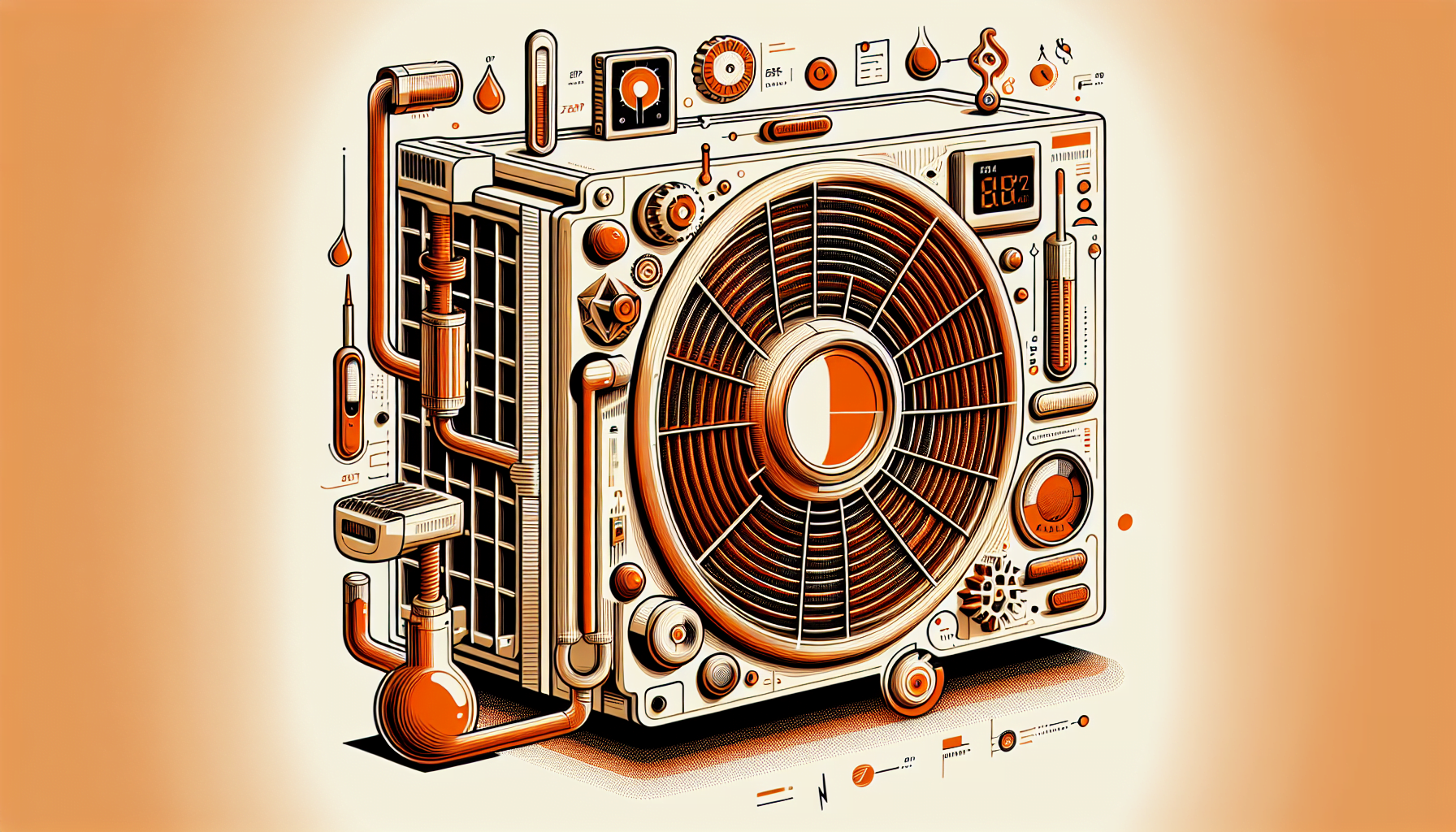The ideal heat pump air temperature at the register is between 80-100°F (27-38°C). It’s a figure that strikes a fine balance between your comfort and the system’s efficiency. Ever found yourself wrapped up in a blanket, teeth chattering, wondering why your heat pump isn’t turning your home into a cozy haven?
That moment of shivering is a sign that something’s amiss. With a gentle nudge, this article will guide you from the cold into the warm embrace of optimal heat pump performance.
I’ve felt that same chill, and through hands-on experience, I’ve uncovered the tweaks that transform a lackluster heat pump output into a steady stream of warmth. Let’s dive into the heart of your system and turn up the heat on knowledge.

Ideal Air Temperature Range for Heat Pumps

Evaluateing the Sweet Spot: Optimal Heat Pump Air Temperatures
You’re probably wondering about the best air temperature your heat pump should deliver. Let’s cut to the chase: the sweet spot is typically between 80-100°F (27-38°C). But why this range? It’s all about balancing comfort with efficiency. Your heat pump is designed to operate within this zone to keep you cozy without overworking itself.
Thermostat Settings: The Heart of Heat Pump Efficiency
Your thermostat isn’t just a switch for your heat pump; it’s the brain. Setting it within the optimal range is important. Think of it like setting the pace for a marathon runner – too fast and they’ll burn out, too slow and they won’t finish in time. The same goes for your heat pump. Dial in the right temperature, and you’ll maintain efficiency and longevity.
Duct Design: The Vascular System of Your Heat Pump
Imagine your home’s ductwork as the veins and arteries of your heat pump. If they’re well-designed, air flows smoothly and reaches the desired temperature at the register. Poorly designed ducts? That’s like clogged arteries. Airflow gets restricted, and your heat pump struggles to hit that 80-100°F mark. It’s all about good circulation.
The Cold Truth: How Drafts Affect Your Heat Pump
Drafts are the nemesis of your heat pump’s performance. Just as you’d shiver in a cold breeze, your heat pump feels the chill too. Cold air infiltrating your home forces the system to work harder to maintain the ideal temperature range. It’s like trying to heat a room with the window cracked open – counterproductive and costly.
Maintaining Proper Airflow: The Lungs of Your Heat Pump
Proper airflow is to your heat pump what a deep breath is to your lungs. It’s indispensable. Without it, your system can’t perform at its best. Ensure vents are unblocked and filters are clean. This isn’t just about preventing suffocation; it’s about allowing your heat pump to breathe easily and deliver that perfect 80-100°F air to your space.
Troubleshooting Heat Pump Air Temperature Issues

Chilly Reception: Why Your Heat Pump Blows Cold Air
You’ve noticed your heat pump is blowing air that’s cooler than expected. It’s not just you; this is a common issue. Often, it’s due to low refrigerant levels. Refrigerant is the lifeblood of your heat pump, circulating through the system to transfer heat. When levels drop, so does efficiency and warmth. Think of it like trying to make a cup of tea with just a few drops of water – it’s not going to get hot.
Filtering Out the Problem: The Impact of Dirty Air Filters
Now, let’s talk about air filters. A dirty filter is like a clogged artery in your heat pump. It restricts airflow, straining the system and reducing the heat output. Imagine breathing through a straw; that’s what your heat pump is doing. Regularly cleaning or replacing your air filters can be as refreshing for your system as a deep breath is for you.
Defrost Cycle Dilemmas: Understanding Your Heat Pump’s Winter Behavior
During colder months, your heat pump might enter a defrost cycle to prevent ice buildup. It’s like your fridge’s defrost function, but for your heat pump. This cycle can temporarily send cooler air into your home. It’s a necessary evil, like shivering to warm up. If this cycle runs too often or for too long, though, it’s a sign something’s not right.
Coil Conundrums: The Heart of Heat Exchange
The coils in your heat pump are where the magic happens – heat is absorbed and released here. If they’re dirty or damaged, it’s like trying to cook with a filthy or warped pan. The results? Not so hot. Keeping these coils clean and in good repair is key for a well-functioning heat pump.
Thermostat Tactics: Setting the Stage for Comfort
Your thermostat is the director of your heat pump’s performance. If it’s not set correctly, your heat pump might not be getting the right cues. It’s like following a recipe – if the oven’s not at the right temperature, your cake won’t bake properly. Double-check your settings and adjust as needed to ensure your heat pump can do its job effectively.






